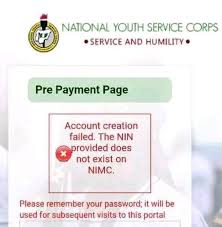Every year, thousands of Nigerian graduates are mobilized for the National Youth Service Corps (NYSC), a one-year compulsory program aimed at promoting unity, building experience, and supporting national development. From fresh university graduates in Lagos to polytechnic finishers in Kano, the big question is always the same: how much is the NYSC allowance now?
In this blog post, we take a deep dive into the current NYSC allowee as of 2025. If you’re a serving corps member or preparing for mobilization, this guide will tell you everything you need to know—from how much you’ll be paid, why the allowance changed, delays affecting some batches, to how to make the most of your money during the service year.
A Brief Look at the NYSC and Why the Allowance Matters
The NYSC program has been around since 1973. It was created after the Nigerian civil war to encourage national integration. It became a way to send graduates to different states, mostly outside their home regions, to serve for one year in schools, hospitals, farms, government ministries, and private establishments.
For many young Nigerians, NYSC is their first real work experience. It’s also their first steady source of income after school. That’s why the allowance—also called the “allowee”—is so important. Most corps members rely on it to pay rent, buy food, cover transport, and handle basic survival. Without the allowee, the service year would be nearly impossible for many.
The History of the NYSC Allowee in Nigeria
Before we get to the current figures, it’s important to understand how far this allowance has come. Years ago, in the early 2000s, corps members were earning less than ₦10,000 per month. That was the reality until 2011, when the amount was increased to ₦19,800.
That ₦19,800 allowance remained unchanged for nearly eight years. In 2019, after the Federal Government signed a new minimum wage law into action, the NYSC allowance was increased again. This time, corps members began to receive ₦33,000 monthly. It was a significant raise, and for a while, it helped young graduates cope with the increasing cost of living.
However, between 2020 and 2023, Nigeria saw a major rise in inflation. Food prices soared, rent doubled in many cities, and transport became more expensive. By the end of 2023, it was clear that ₦33,000 was no longer enough. Most corps members struggled to survive, especially in big cities like Abuja, Port Harcourt, and Lagos.
The Big Update: NYSC Allowance Rises to ₦77,000 in 2025
In 2024, the Federal Government finally responded to the growing pressure. As part of a larger review of the national minimum wage, the NYSC monthly allowance was revised. It was announced that all serving corps members would now receive ₦77,000 per month, starting from the second half of 2024.
This new payment was expected to be fully implemented by July 2024, but not every corps member received the new amount immediately. Some reported receiving ₦77,000 in August, others in September, while some batches continued to receive the old ₦33,000 into late 2024. This caused confusion, especially for corps members who had made financial plans based on the promise of a new allowee.
Now, in 2025, the full rollout of the ₦77,000 monthly allowance has started taking shape. Most current corps members under Batch A and B of 2025 have started receiving the full amount. However, delays still exist in some places due to administrative and financial issues.
Why the NYSC Allowee Was Increased
There were many reasons behind the decision to increase the NYSC allowance. First, Nigeria’s cost of living had become too high for a ₦33,000 allowance to cover even basic needs. Rent, feeding, and transport now cost much more than they did five years ago. Corps members in cities like Lagos or Abuja were barely surviving on the old rate.
Second, there was growing pressure from youth groups and student associations, who called out the government for ignoring young people. Many of them argued that if the government could afford luxury allowances for politicians, it could also afford better stipends for corps members.
Third, the Federal Government was reviewing the entire national wage structure. As part of that process, the NYSC allowance also came under review. The result was the new ₦77,000 allowance approved by the Presidency and included in the 2025 national budget.
But Not Everyone Is Getting ₦77,000 Yet
Even in 2025, many corps members are still receiving ₦33,000. This might sound confusing, but there are clear reasons for the delay. The increase was approved, yes. But the release of funds—also known as “cash backing”—is still slow.
Some ministries are still processing budget approvals. Others are waiting for money to be released from the treasury. Because of this, some NYSC state secretariats haven’t started paying the new allowance fully. Others are paying in parts, or are dealing with backlog payments.
This has led to frustration among corps members, especially those in rural areas who depend heavily on the federal allowee for their day-to-day needs. Some have had to borrow money from friends or family while waiting for their correct payments to arrive.
The NYSC management has responded to these issues, saying they are working with the Ministry of Finance to ensure all corps members begin receiving ₦77,000 consistently. But for now, it’s a matter of patience and continued advocacy.
Extra Allowance from State Governments
One of the best-kept secrets of NYSC is that the Federal Government is not the only one that pays corps members. In some states, the local government or state government also gives corps members additional monthly allowances. This is known as the state allowee.
This extra money is meant to encourage corps members to serve in rural areas, stay committed to their work, and help them deal with the local cost of living. However, not all states offer this benefit. In fact, only a few states currently pay corps members, and the amount varies from place to place.
For example, corps members posted to Lagos State often receive additional monthly stipends, sometimes up to ₦15,000. In Anambra, some teachers and health workers serving through NYSC receive ₦8,000 to ₦10,000 extra. States like Enugu, Kano, Bayelsa, and Akwa Ibom also offer similar benefits, mostly to those working in education or healthcare sectors.
But it’s important to know that these payments are not always consistent. In some months, the state may pay. In others, it may not. It depends on the state’s budget, leadership, and commitment to the NYSC program.
Can the NYSC Allowee Really Cover All Living Costs?
This is the big question on every corps member’s mind. Even with ₦77,000 per month, is it enough?
Well, that depends on where you’re serving. In places like Abuja or Lagos, the cost of rent and transport can swallow more than half of your allowance. A shared apartment might cost ₦20,000 to ₦40,000 per month, while transport to and from your Place of Primary Assignment (PPA) could cost you ₦600 to ₦1,000 daily.
In rural areas or smaller towns, life is much cheaper. Some corps members pay just ₦5,000 or ₦10,000 for shared accommodation. Others live in free quarters provided by schools or local government offices. This allows them to save more money and even send some back home.
Still, even with the new ₦77,000 allowee, corps members need to be careful with spending. One sickness, one emergency trip, or one bad decision can ruin your budget for the entire month.
How to Manage Your NYSC Allowee Wisely
If you’re earning ₦77,000 every month, you have a golden opportunity to build financial discipline. This is the best time to learn how to budget, save, and even invest on a small scale.
One helpful approach is to create a simple monthly plan. Decide how much you want to spend on food, rent, and transport. Set aside a fixed amount—maybe ₦10,000 or ₦15,000—for savings. Even if you don’t need the money now, it will come in handy after your NYSC year.
Some corps members have started mini businesses with their allowee. A few bake snacks and sell to colleagues. Others run social media pages, tutor students, or do photography on weekends. Some are learning tech skills like UI/UX design, content creation, or software development. This is a smart move, as life after NYSC is often unpredictable.
Real Experiences from 2025 Corps Members
Many corps members in 2025 have started sharing their personal stories about how they use their allowee. Tolu, who is serving in Ogun State, said he now receives ₦77,000 from the federal government and another ₦10,000 from his PPA. He used part of the money to buy a used laptop and started learning digital marketing.
Amaka, a corps member in Enugu, shared how she saves ₦20,000 monthly by living in the school’s staff quarters and cooking her own meals. She plans to use the money to start a foodstuff business after NYSC.
Not everyone is lucky though. Sani, serving in Zamfara, said he’s still receiving ₦33,000 and hasn’t been paid in two months. He’s had to rely on support from home. Still, he remains hopeful that his backlog will be paid soon.
Conclusion:
The NYSC allowee is more than just a monthly payment. It’s a lifeline for many young Nigerians trying to survive their service year. In 2025, the increase to ₦77,000 was a big step forward. But with delays in payment and inconsistencies in state support, there’s still a lot of work to do.
If you’re a corps member, focus on using your allowee wisely. Learn a skill, save consistently, and avoid wasteful spending. Your NYSC year is not just a time to serve the country—it’s a time to build your future.
Keep an eye on your dashboard, stay updated with NYSC news, and plan every naira you receive. The choices you make today could shape your life after NYSC.
Additionally, the federal government has commenced the payment of ₦44,000 in arrears to former corps members who completed their service before the new allowance took effect. This move fulfills her earlier promise tied to the recent upward review of corps members’ monthly allowance.





